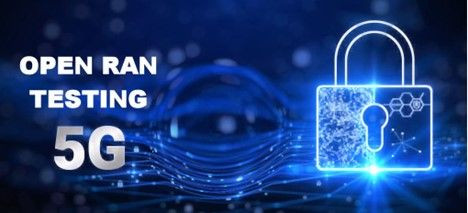Open RAN promises to reduce cost and drive innovation in 5G networks. RAN hardware and applications running over the RAN must be thoroughly tested and qualified while under the presence of real-world network delay and impairments. The two main reasons for this:
1) The multi-vendor nature of Open RAN means components may not work well together, impacting network performance and quality of service. Thorough testing is required to identify and fix issues before Open RAN solutions are deployed in live 5G networks.
2) Due to the fact that RAN is moving to a packet switched architecture to increase bandwidth efficiency and add flexibility, just like ethernet introduces new issues such as delay variation and packet loss, causing problems with timing protocols and latency sensitive applications being transported over the RAN.
Thorough testing is required to identify and fix issues before Open RAN solutions are deployed in live 5G networks. Testing also ensures Open RAN meets key 5G requirements like high throughput, low latency and support for massive device connectivity.
What are the key areas of Focus for 5G open RAN testing:
- Interoperability – ensuring multi-vendor RAN components are fully compatible and can work together seamlessly. This includes testing interfaces, protocols and data models between different equipment.
- Performance – verifying Open RAN can meet 5G key performance indicators for throughput, latency, reliability and connectivity. Both individual components and the overall end-to-end solution need to be tested.
- Conformance – confirming Open RAN equipment adheres to relevant 5G standards and specifications. Conformance tests are especially important for the open interfaces between RAN components from different suppliers.
- Security – identifying and mitigating any additional security risk introduced by the multi-vendor nature of Open RAN. Testing si needed to ensure sensitive data and interfaces are properly secured.
- Scale – proving Open RAN solutions can support the massive scalability required for large 5G deployments with huge numbers of connected devices
- Resilience – Testing the reliability and resilience of Open RAN in handling failures, overload situations or faults in any part of the multi-vendor network
- Rigorous testing across all these areas is key to realizing the full potential of 5G Open RAN. With robust testing regime, operators can have confidence in deploying Open RAN and reaping the benefits of a more open, disaggregated RAN architecture.
As we move forward with 5G Open RAN deployments, following best practices for testing will be key. Careful planning, robust test methodologies, and comprehensive validation against requirements are essential.
The Aukua’s XGA4250 is perfectly positioned to help, with a powerful and flexible 3-in-1 architecture supporting network impairment emulation, traffic generation and inline packet capture and protocol analysis.







